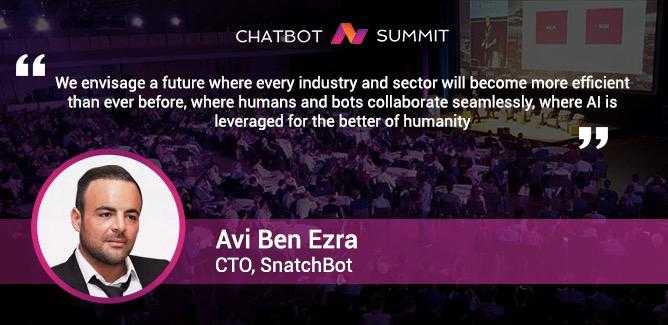Tech
Chatbots are Predicted to Reduce Business Costs by 2022

Artificial Intelligence is taking businesses to another level. And chatbots is one kind of Artificial Intelligence that increases productivity and reduces costs. It was Oracle which predicted that 80% of businesses plan will be using chatbots by 2020. And it also predicted that chatbots are expected to reduce business costs by $8 billion by 2022.
Avi Benezra, who is the CTO of SnatchBot, said that chatbots really helped them cut the costs and it bumped up the conversion rates. That is why others are now adopting chatbots more rapidly.
AI technology is indeed changing every aspect of our lives. Now chatbots aren’t just about gadgets but there are also Chatbot lawyers, Chatbot therapists and more. Chatbots are also changing the business-to-consumer (B2C), business-to business (B2B) and business-to-employee (B2E).
For a single task a single bot is enough. The task takes place through a fixed set of scenarios in the single use bot. But when there are multiple tasks then multi-tasking bots come to play.
The Chatbot platform must provide the ability to track and streamline multiple functions simultaneously within a single task Chatbot. And it is important to have the ability to create and deploy a multi-purpose chatbot for communication.
For multiple tasks to be performed the chosen platform must offer pre-built bots. And these bots must be ready to deploy in order to address specific tasks. These tasks could consist of customer support, lead generation, and many more. Also the bots must be customizable. This feature makes it easy to further interactions according to the type of business you are dealing with.
The platform for the Chatbot development program must have customized user interfaces.There is a preferred channel for every Chatbot. And it could be various channels like websites, mobile apps, social media, email and SMS. Bots can also interact with Skype, Slack and Telegram, but it’s mostly for corporate purposes.
NLP and Speech Support are the most used tools of best chatbots platform in field of language and speech. These tools help them to train and to maintain the accurate interactions, and conversations through both text and speech. By the NLP and Speech Support chatbots understand the user and give relevant response.
Bots can perfect their natural language processing capabilities with the help of Machine learning. Therefore the chatbots must be smart and intelligent so that they will gauge and remember the data and learn from it. The interactions with customers will improve over time and they collect the information from the conversations. This way they can serve the customer’s request once they hone their machine learning and language.
An internal bridging map is vital for the Chatbot platform. It helps with the sharing of messages between users. Moreover, chatbots and the cross-functional systems should also have the bridging. A bridge records the success and the failures. It categorizes messages, so that the bot manager can have a comprehensive understanding of the chatbots function.
Chatbots are indeed the future of business, as they will help cut the costs. But proper research is necessary to build a right bot platform. The features must match the functionality of the chatbot used in a particular business.
Tech
Norovex Mobile Trading: The New Edge for Aussie Investors

Australia has always been a nation of savvy traders—whether it’s equities, commodities, or the fast-moving crypto market. With markets increasingly global and the world operating 24/7, Aussie traders are shifting rapidly toward mobile-first trading, where timing and execution matter just as much as strategy.
That’s where Norovex steps in. Designed for traders who need real speed, clean usability, and access to global markets at any hour, Norovex’s mobile platform is gaining traction among Australian investors looking for a modern edge.
Let’s explore why Norovex is becoming a standout choice for traders across Sydney, Melbourne, Perth, Brisbane, and beyond.
A Platform Made for Australia’s Fast-Paced Trading Style
Australian traders don’t just follow markets—they follow multiple markets:
- Crypto runs 24/7
- US stocks open overnight
- Asian markets move early
- Forex never sleeps
Norovex’s mobile platform is built precisely for this reality.Whether you’re checking charts over your morning flat white or monitoring crypto swings late at night, the app gives you:
- Live pricing
- Fast execution
- Smooth charts
- Full market access
- Instant notifications
It’s designed for traders who don’t want to miss an opportunity—no matter what time zone drives it.
Crypto Trading on Mobile: A Strong Match for Australian Traders
Australia has one of the highest crypto adoption rates globally, and Norovex caters directly to that demand.The platform offers:
- Bitcoin, Ethereum, and a wide selection of altcoins
- Margin trading for amplified opportunities
- Real-time volatility alerts
- Tight spreads even during peak market moves
For Australian traders who love catching dips during US trading hours or riding weekend altcoin momentum, Norovex’s mobile app provides the kind of speed and fluidity these markets demand.
Trade Global Markets From Anywhere in Australia
Beyond crypto, Norovex gives Aussies access to:
- Forex (majors, minors, exotics)
-

 Tech5 years ago
Tech5 years agoEffuel Reviews (2021) – Effuel ECO OBD2 Saves Fuel, and Reduce Gas Cost? Effuel Customer Reviews
-

 Tech6 years ago
Tech6 years agoBosch Power Tools India Launches ‘Cordless Matlab Bosch’ Campaign to Demonstrate the Power of Cordless
-

 Lifestyle6 years ago
Lifestyle6 years agoCatholic Cases App brings Church’s Moral Teachings to Androids and iPhones
-

 Lifestyle5 years ago
Lifestyle5 years agoEast Side Hype x Billionaire Boys Club. Hottest New Streetwear Releases in Utah.
-

 Tech7 years ago
Tech7 years agoCloud Buyers & Investors to Profit in the Future
-

 Lifestyle5 years ago
Lifestyle5 years agoThe Midas of Cosmetic Dermatology: Dr. Simon Ourian
-

 Health7 years ago
Health7 years agoCBDistillery Review: Is it a scam?
-

 Entertainment6 years ago
Entertainment6 years agoAvengers Endgame now Available on 123Movies for Download & Streaming for Free
